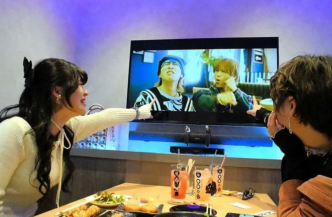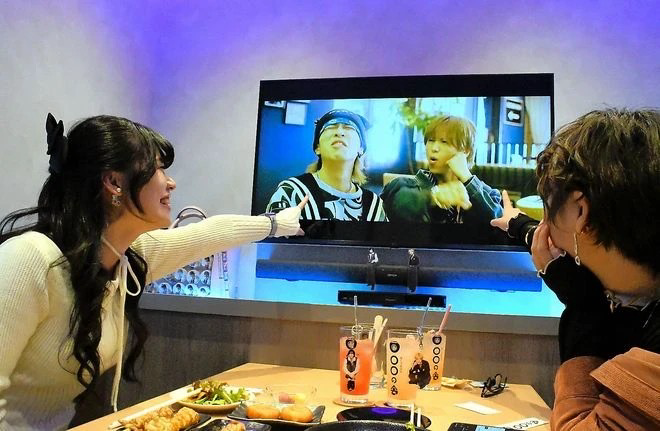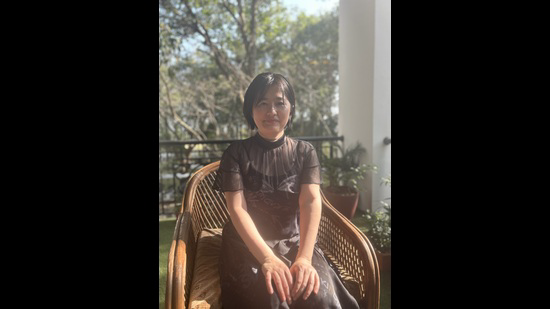Japan’s Gen Z economy is making waves, thanks to a unique trend called “oshikatsu”—a culture where fans passionately support their favorite idols by spending heavily on merchandise, concerts, and exclusive events. This phenomenon has caught the attention of the Bank of Japan (BOJ), which sees it as a potential driver of economic recovery.
With the rise of oshikatsu spending, businesses are capitalizing on this demand, and young consumers are reshaping Japan’s retail and entertainment industries.
Key Highlights of the Oshikatsu Economic Trend
- Gen Z drives consumer spending through their passion for idol merchandise, events, and concerts.
- The oshikatsu market includes anime, idols, and other pop culture sectors, valued at 800 billion yen ($5.3 billion) as of 2024.
- Women in their 20s and 30s make up 95% of customers at oshikatsu-themed venues.
- The Bank of Japan recognized oshikatsu spending in its 2024 and 2025 economic reports.
- Fans often prioritize spending on idol-related goods over everyday expenses.
What is Oshikatsu? The Passion Behind Japan’s Fan Culture
The Rise of Oshikatsu Among Gen Z
Oshikatsu (推し活) refers to the dedicated support of favorite idols, artists, or anime characters. Fans spend extensively on items such as:
- Concert tickets and meet-and-greet events
- Limited-edition merchandise like posters, keychains, and photobooks
- Idol cafés and themed restaurants where fans celebrate their favorite stars
One popular example is Oshikatsu Izakaya Marumaru-no-kai in Tokyo’s Ikebukuro district, where fans can gather in private rooms to watch idol performances while enjoying food and drinks.
According to Neo Marketing Inc., a 2024 survey revealed that 8.1% of respondents participated in oshikatsu activities, with Gen Z making up the largest group (32.7%).
How Gen Z’s Spending is Fueling Japan’s Economy
Gen Z’s passion for oshikatsu goes beyond a simple hobby—it’s a major economic force. Many young fans spend thousands of yen every month on their idols.
For example, a 28-year-old woman from Ibaraki Prefecture spends up to 200,000 yen ($1,300) monthly on concert tickets and idol goods, saying, “My purpose in life is to support. That’s why I work hard.”
Why Do Young People Invest So Much in Oshikatsu?
Experts believe oshikatsu is more than just fandom—it’s a way for Gen Z to find meaning and community in a changing society.
- Social Connection: Unlike older generations, who built relationships through stable careers and local communities, Gen Z forms bonds through shared hobbies and online interactions.
- Multiple Identities: Social media allows young people to express different aspects of themselves, and oshikatsu becomes part of their self-identity.
- Escapism & Joy: With rising economic pressures and job instability, fans see supporting idols as an emotional investment that brings happiness.
The Bank of Japan’s Recognition of Oshikatsu’s Impact
BOJ Acknowledges Oshikatsu as a Spending Trend
In October 2024, the Bank of Japan (BOJ) mentioned oshikatsu in its economic report for the first time. The January 2025 BOJ report highlighted how young consumers are cutting daily expenses to afford idol-related purchases.
A BOJ official noted that this trend reflects a shift in consumer behavior, where people prioritize “special experiences” over material goods. This suggests that oshikatsu spending may sustain economic activity, even amid inflation.
How Businesses Are Capitalizing on the Oshikatsu Boom
Companies are recognizing the spending power of young idol fans and launching businesses tailored to oshikatsu culture.
For example:
- Themed restaurants like Oshikatsu Izakaya cater exclusively to fans.
- Merchandise and events businesses are expanding to meet rising demand.
- Music and entertainment industries are leveraging Gen Z’s loyalty and purchasing power.
Not Just Gen Z: Oshikatsu Among Older Generations
While Gen Z leads the oshikatsu movement, older fans also participate. Middle-aged and elderly fans spend on enka ballad singers and nostalgic artists like Kiyoshi Hikawa and Junretsu.
For example, Masae Miyaji, 48, rediscovered her love for singer Koji Kikkawa and now attends his concerts regularly, saying, “I didn’t want to leave any regrets.”
This shows that oshikatsu culture spans generations, further strengthening its role in Japan’s consumer market.
Conclusion: Will Oshikatsu Save Japan’s Economy?
While oshikatsu alone may not fully revive Japan’s economy, its impact on consumer spending, entertainment, and retail industries is undeniable.
With Gen Z leading the charge, businesses are adapting to cater to this new wave of passionate, high-spending fans. As long as young consumers prioritize unique experiences over traditional savings, oshikatsu could remain a key economic driver in Japan for years to come.
Source: https://www.asahi.com/ajw/articles/15587030

















